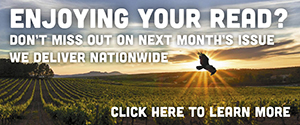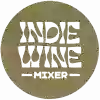Willamette Valley Pinot Noir as a Cultural Good
Does its cultural value translate to a greater willingness to pay?
Sometimes the simultaneity of events can spark a research question. On a flight back to Portland, Oregon, I was finishing reading the last chapter of Wine and Economics by University of Wisconsin-Whitewater Economics Professor Denton Marks entitled “Wine as a cultural good” at the same time as another passenger was giving wine advice to a flight attendant. This member of the Artesa Vineyards and Winery wine club in Napa Valley pointedly noted that its Pinot noir was less expensive than those from Oregon. It turns out that the range of prices for Artesa Pinot noirs is $28 to $80 for a 750 ml bottle, comparable to the prices of Willamette Valley Pinot noir. Nevertheless, the comment illustrated the widely held perception that Willamette Valley Pinot noir is among the costliest in the New World. Undeniably, higher quality Pinot noir, regardless of its source, falls squarely into the ultra-premium category of wine and, for many examples, is a luxury product. As I listened, I wondered, particularly for Willamette Valley Pinot noir, is the higher price, generally well above the total cost of production, reflecting its value as a cultural good? I invited Professor S. Lynne Stokes, Chair of the Department of Statistics at Southern Methodist University, to explore the question with me.
Our approach relied heavily on the pioneering work of David Throsby, Distinguished Professor of Economics at Macquarie University in Sydney, Australia. Throsby is credited with developing the idea of a cultural good in his seminal work, Economics and Culture. In it, he makes the case that “economic and cultural value stand as distinct concepts which need to be separated in the valuation of cultural goods and services in the economy and in society.” He then goes on to argue “that willingness to pay is an inadequate or inappropriate indicator of cultural value.”
Our first challenge was to determine whether Willamette Valley Pinot noir satisfies Throsby’s six cultural value characteristics. We believe it does:
- Aesthetic value: While there is some debate as to whether Willamette Valley Pinot noir is a work of art or an artisanal product, it is renowned for aesthetic properties including elegance, balance, complexity and attractive structure.
- Spiritual value: Willamette Valley Pinot noir can inspire an emotional connection to the wines themselves and to the sites from where they come.
- Social value: From its earliest days, the Willamette Valley wine industry has been a model of cooperation among growers and producers. That the word “competitor” is rarely if ever used evidences the collaborative culture. Also, most producers practice some form of sustainability and embody a green perspective.
- Historical value: Many of the pioneers of Willamette Valley Pinot noir have looked to Burgundy for guidance and so exemplify a continuity with the past, albeit transplanted to the New World. After over 50 years, members of the second generation have taken over a few of the first wineries.
- Symbolic value: Perhaps the best evidence is that memorable Willamette Valley Pinot noir honors both the winemaking traditions of the Old World and the modern methods of the New World. The term “Oregundian” is apposite. For example, Domaine Drouhin Oregon was established in 1987 with tagline “French Soul – Oregon Soil.”
- Authenticity value: Willamette Valley Pinot noir comes from a number of American Viticultural Areas (AVAs) within it, each of which can yield different characteristics of which some are arguably unique. There are significant stylistic differences among the producers, as well, that yield distinctive expressions of the variety. A 2011 article in the Journal of Wine Economics by Robin Cross, Andrew J. Plantinga, both of Oregon State University, and Robert N. Stavins of Harvard demonstrated that “Buyers and sellers of vineyard parcels in the Willamette Valley…attach a significant premium to sub-AVA designations…”
Throsby identifies five assessment methods two of which, expert appraisal and attitudinal analysis, are applicable in the case of wine. For the former, I analyzed 681 scores assigned to Willamette Valley Pinot noirs by Rusty Gaffney and their retail cost. His scoring guidelines are: 94-100 Extraordinary, 90-93 Outstanding, 86-89 Very good, 80-85 Good and 75-79 Decent. The range of score assigned to this sample was 85 to 98 with an average of 90.7. The retail price per bottle ranged from $15 to $175 with an average of $48. The mean of the distribution of each price minus $15 (the lowest price and also about the cost of producing a typical bottle) divided by its Gaffney score minus 85 (thus focusing on wines rated at least very good) is $6.37. I fitted a curve that gives the Gaffney score from the retail price of the bottle. Using a statistic that looks at the percent of variation in the retail price with the variation in Gaffney score, in this case about 25%, we arrive at $4.76 per Gaffney point above 85 that is explained by something other than the Gaffney score. Might it include a monetization of part of its economic value as a cultural good?
Lynne conducted the attitudinal analysis based on a survey we developed to elicit estimates of the cultural value of Willamette Valley Pinot noir and the willingness to pay (WTP) value from visitors to four tasting rooms. Our approach is derived from a chapter in the Handbook of the Economics of Art and Culture, Volume 2, entitled “The Economic and Cultural Value of Paintings: Some Empirical Evidence,” published in 2013 by Throsby and Anita Zednik. Our survey collected anonymous demographic data, a self-assessment of wine expertise, responses that registered the degree of agreement on a scale of 1= strongly disagree to 5 = strongly agree with 10 statements that relate to the six cultural value characteristics, and the respondent’s assessment of the retail value which we used as the WTP. Each respondent tasted 2 Willamette Valley Pinot noirs at one of the tasting rooms and completed the survey form for each. The wines sampled were 2013 Neo-Classical Objective and 2014 Anderson Family Vineyard at White Rose Estate; 2009 Jamsheed and 2007 Delara at Maysara; 2013 Rastaban and 2014 Big Cheese at Brooks; and 2014 Classico and 2013 Reserve at Ponzi.
We collected a total of 184 surveys that included 367 responses from the four tasting rooms. Three statistical models were built to predict WTP from the Cultural Value scores, the demographic data, the self-assessed level of expertise, various characteristics of each wine and its retail price. The first used all the data and the other two considered separately the responses of Oregonians and non-Oregonians, which comprised about 21% of the total. All models are highly predictive of WTP, with about 90% of the variation explained by the inputs. The table below shows the statistically significant parameters from each model.

In all three models, we found that the aesthetic value based on the degree of agreement with the statement “I find this wine beautiful” is the only common significant determinant of WTP. For the model based on all responses, the WTP increases $5.83 per Aesthetic value scale point. For Oregonians, the degree of agreement with the statement “This wine is a genuine representative of Oregon Pinot noir” with higher WTP was significant; the increase in WTP was about $2.75 per scale point. For non-Oregonians, there was no evidence of this effect.
Inexplicably ironic is the finding from the Oregonian-only model that the WTP decreases with increased agreement with the statement “This wine helps us understand ourselves better as Oregonians.” Preference for wines coming from more than one vineyard was much stronger than for single vineyard bottlings. In the two models for which the preference of vintage 2009 over vintage 2007 was significant, the increase in WTP was $37.18 for the all respondents’ model and $45.04 for the Oregonian-only model. These are the largest impacts of any parameter in any of the models.
Our analyses support the conclusion that Willamette Valley Pinot noir is recognized by consumers as embodying some of the attributes of a cultural good for which they are willing to pay a premium. But clearly this study raises many more questions than it answers. The spark created by the convergence of my reading Marks’ book and overhearing a conversation seems to have illuminated a multi-forked path.
These results were presented at the annual conference of the American Association of Wine Economists in Padua, Italy, in June 2017. A technical journal article of this study is being prepared.
Neal Hulkower is a mathematician and an oenophile living in McMinnville, Oregon. His wine writing has appeared in a wide range of academic and popular publications including the Journal of Wine Research, the Journal of Wine Economics, Oregon Wine Press, Practical Winery & Vineyard, Wine Press Northwest, and The World of Fine Wine. Occasionally, he can be found pouring quintessential Pinot noir at the top of the Dundee Hills.












